Game Changers in Treatment of Hematologic Malignancies
ONCOLOGY spoke to Andre Goy, MD, MS about advances on leukemia, lymphoma, and myeloma treatments.
Andre Goy, MD, MS
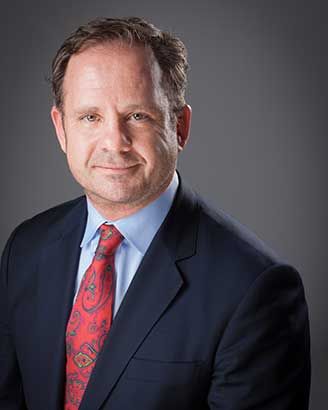
Peripheral blood with chronic lymphocytic leukemia
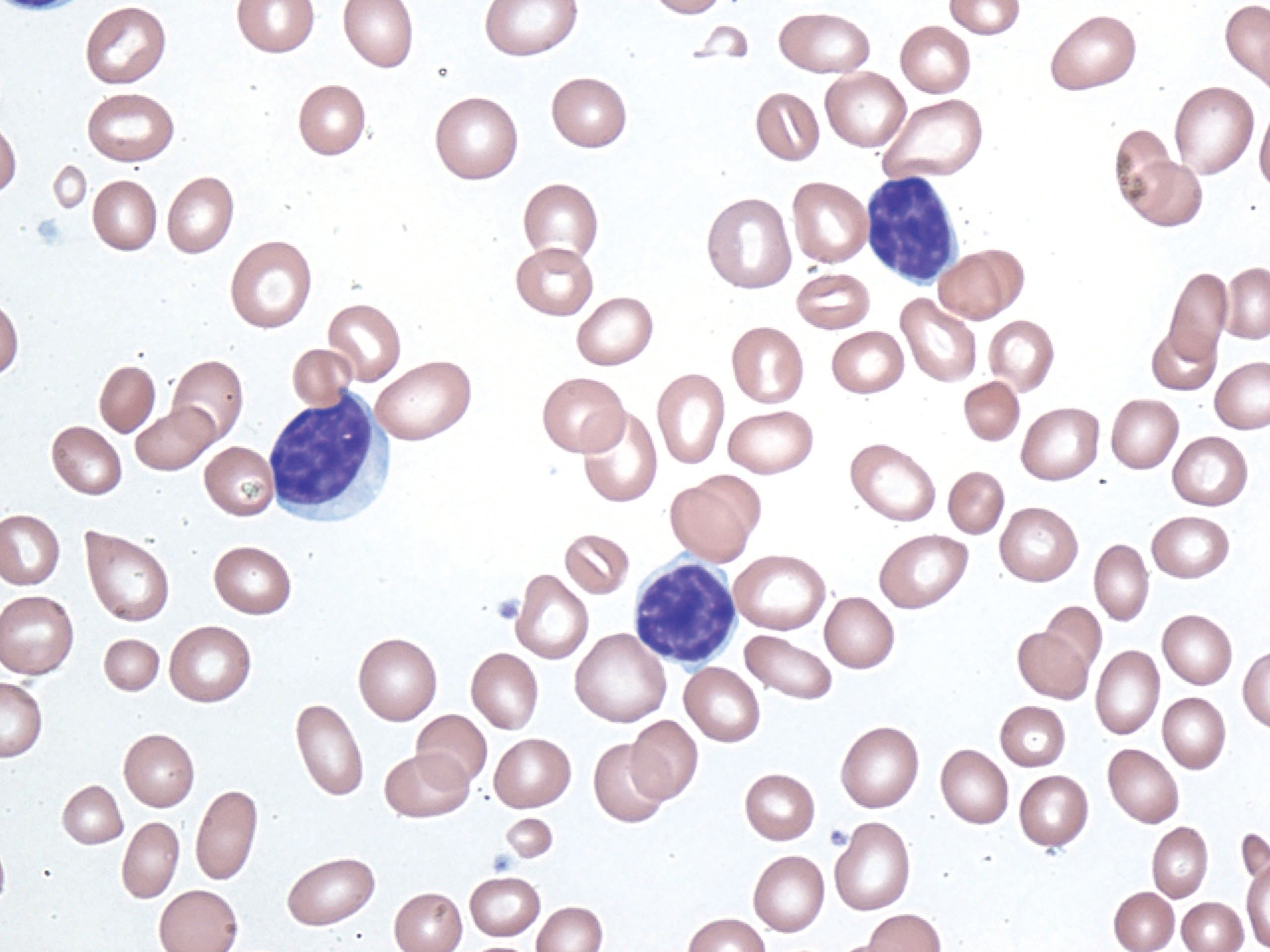
CAR T cell cancer immunotherapy.
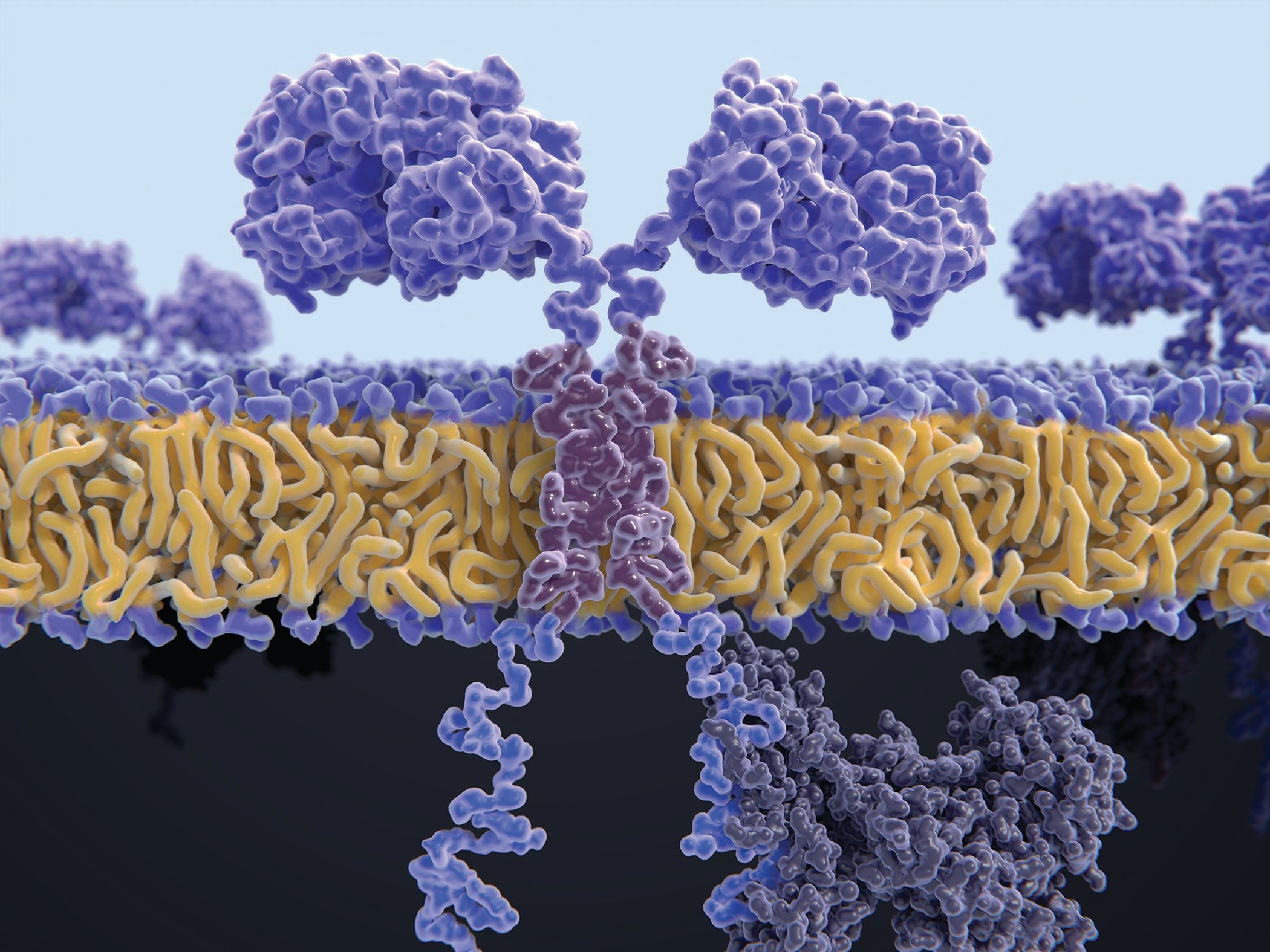
Significant progress, lingering challenges, and more to learn
ONCOLOGY recently spoke to Andre Goy, MD, MS about the advances that will be discussed at the 24th Annual International Congress on Hematologic Malignancies: Focus on Leukemias, Lymphomas, and Myeloma.
Q: There’s a heavy focus on chimeric antigen receptor (CAR) T-cell therapies on the agenda for the conference. Why is this therapy important to put center stage at this time?
Dr. Goy: Over the last few years, we had dedicated a pre-symposium conference that was focused on CAR T-cells and cell therapy. CAR T-cells are a game changing treatment in a population of patients that really has an unmet need. We know patients with refractory/relapsed Chronic Lymphocytic Leukemia (CLL) do very poorly even with allogeneic transplant. Patients with refractory/relapsed large cell lymphoma and aggressive lymphomas can sometimes survive with long-term disease control from an allogenic transplant. However, they may have cardiac failure and they can’t be put into remission.
We have seen some patients who had an excess of 10 prior therapies who have had very durable responses to CAR T-cells, and potentially some of these patients may be cured. What we found in aggressive lymphoma, in both clinical trials and in real-world settings, is that patients who received approved CAR T-cell therapy with axi-cel have superimposable results. We see that, long-term, the survival rate without progression is close to 40%. That’s quite a remarkable result. There are still challenges, but that presents us with an opportunity to learn more.
A number of different platforms of CAR T and different drugs have been approved now. There are over 800 cell therapies in the pipeline, more than half of which are CAR T-cells. This provides a real opportunity. There will be other forms of cell therapy, including dual CAR T, newer constructions of CAR T, third generations of CAR T-cells. Potentially, NK cells will also be important in that setting. This is not only a game changer, but something that offers a new platform for patients who have no options with standard therapy.
Q: Are you working with axi-cel exclusively or other CAR T cells?
Dr. Goy: We are working with a number of different CAR T constructs besides axi-cel, in multiple myeloma, large cell lymphoma, follicular lymphoma, and now in marginal zone lymphoma. We will also have studies opening up in Hodgkin lymphoma. Hopefully, we’ll soon open trials evaluating cell therapy and CAR T in adult acute myeloid leukemia (AML), as well as, hopefully, in solid tumors.
Q: Could you talk about some trends in the CAR T space and some of the biggest unanswered questions?
Dr. Goy: The results are quite spectacular for a subset of patients. The next big question is how to build upon this. How do you predict or understand that the patient is going to do well versus trying to improve the patient who still has a failure? We see quite a few patients who respond well who have a partial response but actually progress afterwards. Few patients who achieve a complete response then relapse, but there’s still an opportunity to improve the depth of response early on. There are some data suggesting that a combination of checkpoint inhibitors, as in the ZUMA-6 trial, might induce higher expansion of T-cells and a more prolonged duration of those CAR T-cells. We have seen some case reports, and now this is being explored as part of the clinical trial of combining CAR T-cell therapy with checkpoint inhibitors at the time of relapse.
For some patients who had further expansion and durable responses, there are a number of different concepts looking at CAR T-cell combinations of small molecules, including Ibrutinib in CLL, combinations with lenalidomide in aggressive lymphoma, and there will be others. The second aspect that needs to be answered is how we can mitigate toxicity and try to make the treatment more feasible. We know this is a therapy that is extremely impressive when it works, but it has toxicities. Cytokine release syndrome (CRS) is present across the board to some degree, with some variation, depending on the CAR T construct. The neurotoxicity is really the issue.
It is something that tends to be more delayed from the CRS and we can predict that neurotoxicity. The CRS tends to occur in most patients with variable degrees, but durable toxicity doesn’t occur across all patients. Typically, neurotoxicity correlates with the degree of expansion of CAR T-cells. We would like to see an expansion of CAR T cells because I do believe that the CAR T-cell expansion early on is really what translates into a better outcome. Although neurotoxicity can be significant, it’s manageable. We now have therapies targeting IL-6 to control this neurotoxicity. What is also important in ongoing studies is the preemptive, early use of steroids and prophylactic use of steroids to mitigate these effects.
Q: Do you have to find the right dose of CAR T?
Dr. Goy: Finding the right dose is important, yes. We also consider questions such as whether several infusions of low-dose CAR T could work. Could we also use CAR T when patients have been less heavily pretreated? There’s an ongoing study in double hit lymphoma where these patients typically relapse after induction therapy; allogeneic transplant doesn’t really work, and when they relapse, they typically can’t make it to the allogeneic transplant. Could this population get CAR T-cells much earlier? That presents an opportunity to try to treat these patients.
Q: Are there other areas of hematology/oncology that you want to focus on at this year’s conference?
Dr. Goy: There is an estimate of 10,000 new drugs in the pipeline of medicine, and 2/3 are in oncology. The other remarkable thing is a better understanding of the molecular diversity of cancer across diseases. As we see over the years there’s further classification and re-stratification of patients, pushing the field towards precision medicine. This is an opportunity at this conference to see what’s relevant and how we can customize therapy to patients and optimize the outcome. We mentioned cell therapy, but it’s not just cell therapy. There are checkpoint inhibitors, there are BiTE antibodies that also have new platforms. All of the biological therapy as well that provides opportunity to shy away from chemotherapy.
Q: Can you tell us about other research in the CLL arena? We are all familiar with the data in CLL, where we already have shifted away from chemotherapy. We have seen in aggressive lymphoma, the data from MD Anderson that Dr. Jason Westin presented in Lugano Switzerland, in which more than 50% of patients with large-cell lymphoma achieved a CR after induction with just R2 (lenalidomide and rituximab) ibrutinib.
Dr. Goy: I had two cases recently, both of which presented with aggressive presentations and were p53-positive. The data tells us that these patients are going to do poorly. Besides the standard molecular high-risk features of large cell lymphoma, p53 is probably underestimated. We have been checking for p53 on every patient for quite a while now. In the relapsed setting, this is more familiar because there is a selection process for the p53-positive chemo-resistant cells. When you have patients who have much more primary resistance, giving them an opportunity to get a window treatment with their biological therapy combination before using chemotherapy is very appealing. The field is shifting; I’m not saying we’re shying away from chemotherapy though. The two patients I just mentioned both of them went into CR with very aggressive presentations without receiving chemotherapy so far. They’re obviously going to get some chemotherapy consolidation.
Q: Is there anything else coming out of this conference that clinicians should really keep an eye on?
Dr. Goy: The last piece that is really important for this conference is in all of this innovation that is coming from every direction. We have to be cognizant as a society about how to afford it. How do we continue to push innovation, but do it in a sensible and responsible way? Every year we have been looking at a value-based care approach, trying to apply smarter medicine to get the longest mileage for patients because that’s the most economical and logical, sensible way to treat patients. We are looking at the data to guide therapy. The current cost of oncology treatment is not sustainable.
The other big question is “what’s the best sequence of care?” In summary, we have this enormous pipeline, the ability to deliver precision medicine, cell therapy, immunotherapy, biological therapy, combinations that shy away from chemotherapy, and big data provides an opportunity to see a rapidly changing landscape. For the passionate oncologist, it can be difficult to navigate what is most relevant and feasible at the clinical level.
Q: Could you talk about ibrutinib?
Dr. Goy: Ibrutinib was the first Bruton’s tyrosine kinase (BTK) inhibitor that has had an enormous impact in CLL and a number of diseases; mantle cell lymphoma (MCL) obviously. We recently published our data with R2 ibrutinib in patients who are not candidates for high-dose therapy, salvage therapy, and stem cell transplant in refractory/relapsed large cell lymphoma.[2] Building on the success of the ibrutinib story, the combination of R2 and ibrutinib has been very impressive with a response rate over 60% and close to 40% CR. Some patients are in remission for more than 3 years. This is very promising. Ibrutinib has provided multiple subtypes of lymphoma with truly targeted therapy that has really changed the field. It provides a first backbone, particularly in combination with rituximab, with which we can build up non-chemotherapy options, even in aggressive large cell lymphoma.
Q: What are the implications of ibrutinib and lenalidomide?
Dr. Goy: In practice, with CLL, the combination of an anti-CD20 antibody has been debated based on the data recently published where ibrutinib itself did as well as ibrutinib/rituximab. In lymphoma, typically the CR rate is better in MCL. We talked about the window of opportunity in patients with p53 abnormalities. For example, the CR rate with the combination of ibrutinib/rituximab in patients with MCL is very impressive in the frontline setting. This provides an opportunity for consolidation with chemotherapy. The data have been used across the board. Ibrutinib/rituximab has also shown very impressive activity in marginal zone lymphoma (MZL), offering an opportunity for these patients who are often more elderly.
Q: Could you discuss biomarkers and novel therapies that are being explored at your hospital?
Dr. Goy: We have been involved in multiple endeavors trying to stratify patients with a number of lymphomas, including large cell lymphoma. Now, as part of a routine observation, we’re looking at p53 across the board. This definitely has an impact. We published data a while ago in patients with mantle cell lymphoma (MCL), which show that achieving a CR early and minimal residual disease negativity has an impact. We looked at the molecular profiling of patients with MCL. If you have a p53 abnormality and deleted ataxia-telangiectasia mutated (ATM) gene or abnormality as well, the survival is extremely different than if you don’t have them, even after a course of hyper-cyclophosphamide, vincristine, doxorubicin, and dexamethasone.
Even with high-dose therapy and stem cell transplantation we’re talking about less than a year, year and a half versus close to 10 years. This was something that was really important and provided a rationale for those patients, particularly in MCL when they have abnormalities, to not start with chemotherapy. We start with R2 ibrutinib or ibrutinib/rituximab and bring them into remission, followed by shorter chemotherapy.
Key Question
Key Could you discuss the long-term safety and efficacy of axi-cel from the ZUMA-1 trial?
Dr.Goy: Research confirms the early impression that when patients have achieved a complete response (CR) and have not relapsed within the first 6 months, typically these patients have somewhat of a plateau with, only very rarely with late relapses.[1] It brings up the question of whether we might discover factors that could predict response. We’ve seen that about 25% to 30% of patients who have a partial response captured by standard/functional imaging can convert into a CR over time, which is very important. The other question that arises is why this happens. Do they have persistent CAR T more than other patients? This is debated in the CAR T community, depending on the construct itself but also depending on the aforementioned potential combinations.
I am not convinced that the persistence of the CAR T is really essential. It’s obviously a good thing, but we have about 1/3 of patients who did not have detectable CAR T who still have been in a durable response. That’s very promising. What is also interesting about the plateau is that the responses and the duration of response was seen regardless of the number of prior therapies, refractory, bulky, and so on. This is consistent with the consensus that this is a completely novel and different form of therapy that overcomes chemoresistance in those patients.
Disclosure:Dr. Goy has consulted for, received research funding or honoraria from, and/or served on the boards of Kite/Gilead, Janssen, Celgene, Acerta, AstraZenca, COTA, Genentech, HakensackUMC, Pharmacyclics, and University of Nebraska. He has equity ownership in COTA.
PERSPECTIVE
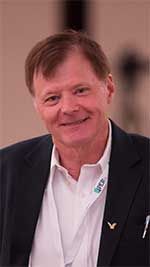
The Oncologist’s Responsibility
Simon D. Murray, MD
As Dr. Goy enthusiastically points out, cell therapy, Car-T, and Immunotherapies have allowed us to move beyond chemotherapy for the treatment of resistant, aggressive lymphomas, and for patients who relapse. When these new therapies work, they offer spectacular results particularly in patients who are chemo resistant, or have relapsed. Fifty percent of these patients have no other options and do not qualify for clinical trials, and yet close to 40% of those treated have sustained clinical response with CAR T therapy.
Car-T therapies are evolving at a rapid pace. Although treatment comes with toxicities, third generation CAR T may also offer fewer toxicities, particularly when combined with other modalities. What is clear is that clinical response does not correlate with the degree of toxicity. The goal is to find out what will predict a patient’s individual risk.
We are at an exciting time in the field of oncology with over 10,000 therapies in the pipeline from cell therapies, CAR-T, immunotherapy, small molecules and combinations of therapies. The biology of cancer is extremely diverse, which allows for the differentiation and certification of patients based on their molecular and genetic makeup. This has pioneered personalized treatment plans based on these characteristics, which in turn has improved survival rates.
The charge of modern oncologists is to find the proper therapies, in the proper sequence, given for the proper period of time, and to make value based treatment decisions that maximize the chance for a durable response, and minimize toxicity while paying attention to cost. Oncologists are exposed to such a dizzying array of treatment options, and in such a rapidly changing landscape. Clinicians need to understand what is relevant to patients today and tomorrow. It is essential to keep learning, in order to clarify the issues essential to patient quality of life and survival.
Financial Disclosures:The author has no significant financial interest in or other relationship with the manufacturer of any product or provider of any service mentioned in this article.
Dr. Murray is Clinical Assistant Professor of Medicine, RWJ Medical School, Rutgers University, New Brunswick, New Jersey, and CMO at MJH Life Sciences, Cranbury, New Jersey.
Disclosures:
References:
1. Locke FL, Ghobadi A, Jacobson CA, et al. Long-term safety and activity of axicabtagene ciloleucel in refractory large B-cell lymphoma (ZUMA-1): a single-arm, multicentre, phase 1-2 trial. Lancet Oncol. 2019;20:31-42.
2. Goy A, Ramchandren R, Ghosh N, et al. Ibrutinib plus lenalidomide and rituximab has promising activity in relapsed/refractory non-germinal center B-cell DLBCL. Blood. 2019 Jul 22. [Epub ahead of print]
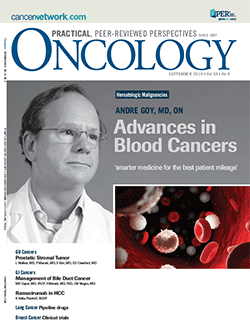
Newsletter
Stay up to date on recent advances in the multidisciplinary approach to cancer.